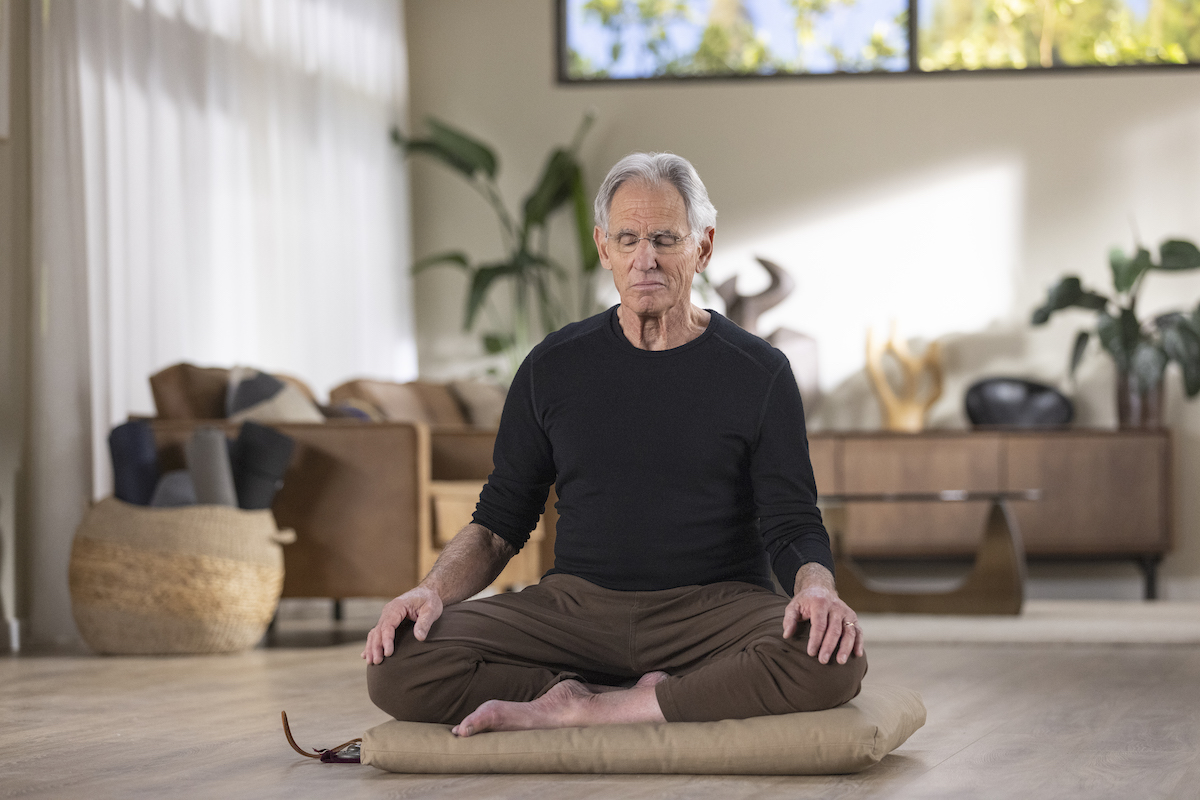Mindfulness, Meditation and the legal profession
---
Practical tips and an argument for, incorporating mindfulness and meditation into the daily practice of law—for both the individual, and the profession
The practice of law—be it compliance, transactional or litigation oriented—is uniquely stressful. The demands of partners and peers, clients, judges and opposing counsel are incessant and there is little opportunity to reset, recover or refresh, during the course of a typical work day.
Much attention has been given to the notion of lawyer wellbeing, as a means of addressing the stressors of the profession, and better managing the challenging thoughts/emotions that flow from those stressors.
Mindfulness and meditation are important components of wellbeing that can be easily incorporated into the flow of a legal professional’s frenzied work day, either individually or as part of a broader wellbeing initiative sponsored by a firm.
What Is Mindfulness?
Many discussions concerning mindfulness and meditation use the two terms interchangeably, but they are actually different. Meditation is mental training (akin to exercise, for physical fitness) and mindfulness is a particular frame of mind that is facilitated by meditation. In basest terms, meditation is the means to an end, the end being, mindfulness.
How best to understand, or define, mindfulness? The definition coined by Jon Kabat-Zinn (an American medical doctor who spent time in the Far East, and is credited with having popularized mindfulness in Western society, as well as designing the Mindfulness Based Stress Reduction (“MBSR”) regimen) has defined mindfulness as: A state of awareness that arises through paying attention, on purpose, in the present moment, non-judgmentally.
Time spent with a four-year-old grandson has led the author to define mindfulness in a less formal manner: Mindfulness is a natural quality we all possess to engage with people, places or things with immediacy and full attention, without personal significance or meaning, and without any preconceived notion as to past causes or future outcomes.
Mindfulness is child-like, but not child-ish.
 Jon Kabat-Zinn / Source: Masterclass.com
Jon Kabat-Zinn / Source: Masterclass.com
What Is Meditation?
How best to understand meditation? Regular meditators sometime say: It’s really quite simple—but it’s not easy. Jon Kabat-Zinn playfully described meditation in the following way: “We can’t stop the waves, but we can learn to surf”. There are countless literal definitions and figurative allusions (readers will no doubt formulate their own definition), but notwithstanding the different meditation traditions that have developed over the centuries, pretty much every description or definition will reflect the importance of silence, and stillness.
If one studies the practice of meditation, one will soon learn that it is different things, to different people. Different traditions. Different postures (walking, standing, lying down, sitting or kneeling). Different “anchors” upon which a meditator can rest his/her attention (tactile, olfactory, auditory, visual or the ever-popular breath). Eyes open or eyes closed, vision diverted downward, blurred or otherwise obscured—the options are personal. Ultimately, the goal is to be comfortable, and to minimize the distractions that the five senses can capture.
The two most popular forms of meditation are silent focused meditation (typically focusing on one’s “anchor”), and led meditation (most often led by a teacher, suggesting specific thoughts or silently repeated phrases)— one practice can be interchanged with the other, and the form adopted is typically a matter of personal preference or situational choice.
Practical decisions aside, meditation (particularly silent focused meditation) is decidedly not about rendering one’s mind a complete blank. Rather, it is the practice of observing. Observing the mind as it thinks thoughts, and observing the body as it feels feelings, or emotions. With patience, curiosity and practice, meditation can train us to observe our thoughts and emotions, and allow them to pass, without reactive word or action. That is the essence of meditation, and the skill that can most obviously benefit us, as lawyers—training ourselves to better manage the difficult thoughts and emotions that arise so often, in the course of a normal work day.
Non-judgment and non-attachment are the cornerstones of a successful meditation practice. They are qualities that are hard earned, but exceedingly valuable to a successful law professional. They maximize our ability to assess challenges clearly, and without bias. They encourage advice that is dispassionate and well-reasoned. And they allow us as advocates for our clients, to be as effective as possible.
Further discussion of nuance is beyond the scope of this article, but readers who may be interested in pursuing the finer aspects of meditation should choose a teacher, join an appropriate class and/or consult with other like-minded practitioners.
Education Is a Necessary Component of Lawyer Wellbeing
Just as the above definitions are offered in order to provide context and foster a broader understanding that can lead to a greater degree of comfort or familiarity, so too is an initial information session useful-- if not necessary-- for the success of a workplace wellbeing initiative.
Lawyers, by nature (and as a result of their training) often require an informational context, before they are comfortable with a new idea or new practice. To deny them that context, is to doom a new initiative to certain failure, and that is an eventuality that must be avoided, at all cost-- even at the risk of confusing lawyer wellbeing with a simplistic new informational metric.
Most people need to believe that wellbeing is both substantive, and useful. Lawyers are no exception. That is especially the case with mindfulness and meditation, about which there are so many false associations and misinformation. Physical fitness is widely accepted, as a component of wellbeing. Case in point, consider all the law firms (or buildings claiming law firms, as tenants) that have invested in ostentatious exercise space and related equipment.
What about mental/emotional fitness? The mind aspect of the classic mind/body health dichotomy is every bit as important as the body piece-- particularly for lawyers. And yet, investment in that critical capacity is woefully lacking, and is undermined by misinformed skepticism. This piece is neither the time nor place for arguing the wrongheadedness of that inequity. Rather, having raised the point, the author will return to the need for education, as a necessary component of lawyer wellbeing, and a tool for remedying the convenient reluctance that plagues the advancement of a singularly important concern.
Institutional Policy Is a Necessary Component of Lawyer Wellbeing
Acceptance of lawyer wellbeing, begins at the top. That’s as it should be—and realistically, as it must be. Leaders of the profession need to enact, cajole or otherwise motivate policy-makers to articulate rules that “officially” authorize individual professionals to do for themselves what they need to do (i.e., provide for their own wellbeing), so they can in turn be at their best for others.
Hours (which are the metric by which most law firms measure one’s contribution) must be allocated to the cultivation of wellbeing. Firm-sponsored initiatives must be designed and made available, to encourage wellbeing. Development of a culture that celebrates the value of wellbeing, must be given priority. In modern vernacular, leaders need to “own” wellbeing.
Profession-Wide Acceptance Is a Necessary Component of Lawyer Wellbeing
How best to promote acceptance of lawyer well-being across the entirety of the legal profession?
In terms of immediate breadth and impact, National, State and Local bar associations (many of which have already sponsored wellbeing events, seminars and webinars) could lend their voices and support, in a variety of ways. Similarly, national organizations such as the Institute for Well-Being In Law (“IWIL”) could continue it’s work (formerly, the National Task Force for Lawyer Well-Being) and other third-party promoters/organizations with close business ties to the legal profession could help.
Every bit as important are law firms. Many (upwards of 200) have already signed the wellbeing Pledge supported by the American Bar Association, and firms that have not yet signed the Pledge should consider (or reconsider) doing so. That action aside, law firms should also consider adding wellbeing content to their respective websites, as they update the information being posted.
Finally, One mustn’t overlook the power of individual lawyers to champion the cause of wellbeing, with a positive mention and word of support.
Aren’t Mindfulness and Meditation Individual Pursuits?
They can be, but any such broad assertion is clearly incorrect.
In the workspace, all one need do is have a brief conversation with one’s administrative assistant about expectations and respecting privacy, then close one’s office door (assuming such a door exists), turn off the light, hit the DND button on one’s telephone, power down the computer and other electrical devices—then assume one’s chosen posture, find one’s chosen “anchor”, and silently begin observing the mind/body or repeating one’s chosen thought/phrase.
Meditation is “me time”, during which one remains silent and is not engaged in any kind of activity that will impose upon one’s office mates. Quite frankly, what one does or thinks or silently repeats, is none of anyone else’s business—indeed, it is unlikely that anyone else will even notice, or care.
Timing-wise, a meditation session can be a repeated exercise lasting only a few minutes, or it can be a lengthier affair, depending upon one’s schedule and inclination. Time of day, length or duration of a particular session (or sessions) and form of meditation, are largely irrelevant. The key is to make time for yourself, to be still and to be silent.
Can Mindfulness and Meditation Be Taught, To A Collective?
In a word, yes.
But any initiative offered by a firm or other institution, should be entirely voluntary. The decision must be clearly up to the individual, but there are tremendous benefits to group meditation, if a firm elects to make time and space, available.
First, group meditation with like-minded people who share a common practice, can be both affirming and uplifting—it cultivates a bond that truly unique, in a work environment.
Second-- and somewhat counterintuitively—group meditation is a shared experience that is incredibly inclusive. Where else would one find a 60-something male partner, sharing space with a 30-something female associate? With eyes closed? In complete silence? And how else might those same two people have anything to say to each other, if they happen to randomly pass each other in the kitchen, or the hallway?
Group meditation is a wonderful shared experience that members of the group cannot possibly gain through other firm-sponsored activities or events. Enforced collegiality, notwithstanding its good intention, is not everyone’s cup of tea—neither is group meditation. The point is that being alone, with others, can be a powerful experience and it behooves a firm to make available that opportunity, as an alternative to other opportunities.
Having led several group meditation sessions, the author strongly recommends that group sessions be voluntary and confidential, limited to no more than 10 attendees per session, and regularly scheduled in a designated office or conference room. Frequency should depend upon attendee registration and response.
Conclusion
Individual lawyers (not to mention clients, work peers, judges and opposing counsel) deserve to be—need to be—well. Both in body, and in mind. How that is implemented is certainly a matter for further deliberation, but whether it is true is no longer a matter for debate.
Physical and mental/emotional health are, at root, personal and as such must be addressed with respect and sensitivity. But social implications—the impact upon others—demand that awareness of health be both elevated, and addressed. Challenges will inevitably arise in striking an appropriate balance between the person and the public, but that does not mean that the work should not begin.
Let the debate begin. Let workplace wellbeing initiatives begin. But by all means, get started!
Related links
Main menu






